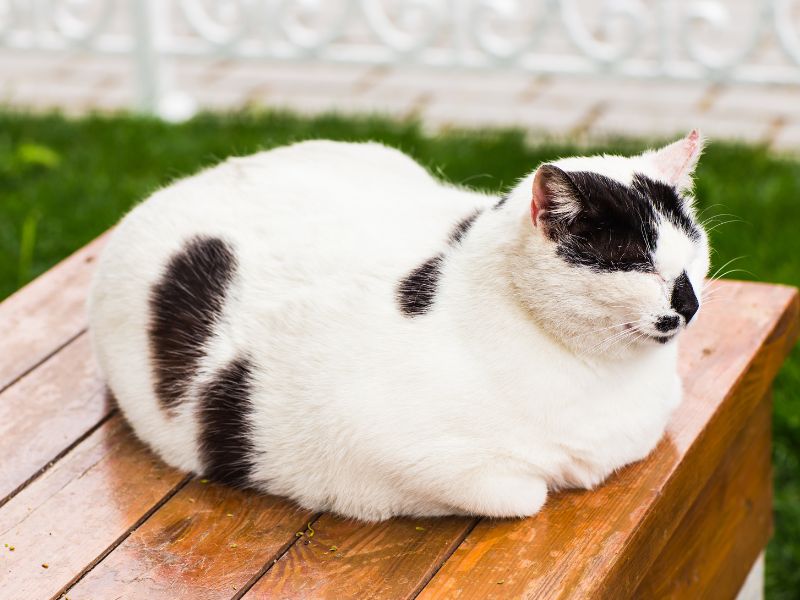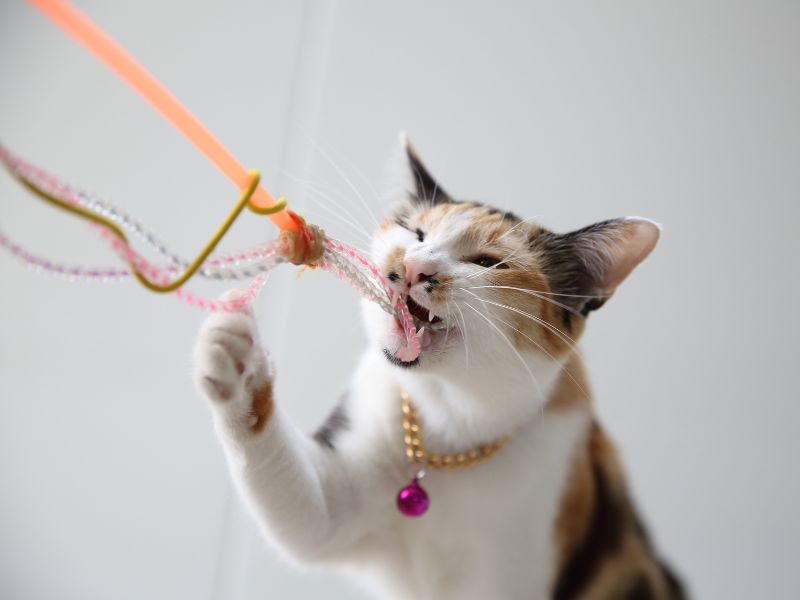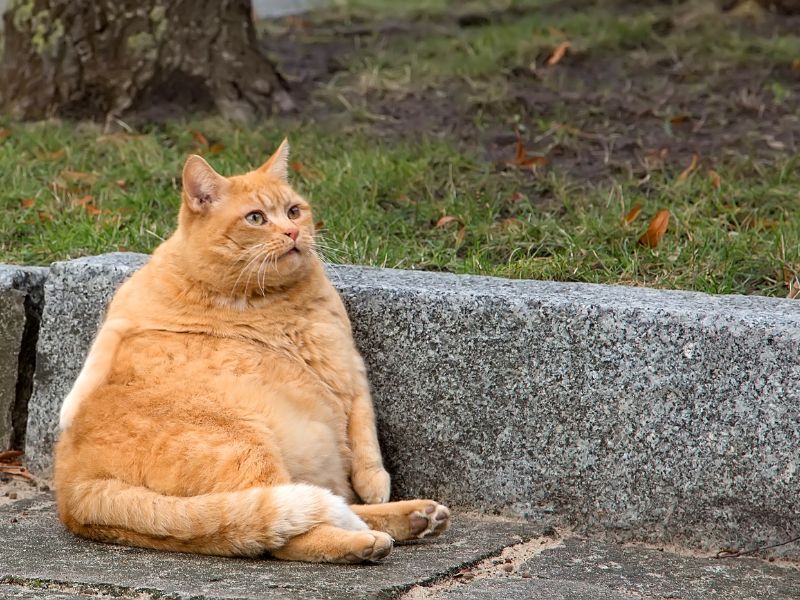The Dangers of Obesity in Cats
As cat owners, we all want our feline friends to live long and healthy lives. However, one of the biggest threats to a cat’s health is obesity. Obesity can lead to a host of health problems, such as diabetes, heart disease, and joint problems. Unfortunately, obesity is also a common problem among cats. According to the Association for Pet Obesity Prevention, an estimated 60% of cats in the United States are overweight or obese.
Obesity can be caused by a variety of factors, such as overfeeding, lack of exercise, and genetics. However, regardless of the cause, it’s important to take steps to help your cat maintain a healthy weight. By doing so, you can help prevent a variety of health problems and ensure that your cat lives a long and happy life.
How to Determine if Your Cat is Overweight
The first step in helping your cat reach their ideal weight is to determine whether they’re actually overweight. One of the easiest ways to do this is to perform a simple visual test. When looking at your cat from above, you should be able to see a waistline. If your cat is overweight, this waistline will be difficult to see, and your cat’s body will appear more rounded.
Another way to determine whether your cat is overweight is to feel their ribs. When you run your hands along your cat’s ribcage, you should be able to feel the ribs without pressing too hard. If you can’t feel your cat’s ribs, or if you have to press down to feel them, your cat is likely overweight.
If you’re still unsure whether your cat is overweight, it’s always a good idea to consult with your veterinarian. They can perform a physical exam and provide you with more information about your cat’s weight and overall health.
Creating a Weight Loss Plan for Your Cat
Once you’ve determined that your cat is overweight, it’s time to create a weight loss plan. Just like with humans, weight loss in cats requires a combination of a healthy diet and regular exercise. However, it’s important to approach weight loss in cats carefully, as rapid weight loss can be dangerous.
When creating a weight loss plan for your cat, start by setting a realistic goal. Your goal should be to help your cat lose weight gradually over time. A good rule of thumb is to aim for a weight loss of no more than 1-2% of their body weight per week. This may not sound like much, but it can make a big difference in your cat’s health over time.

Feeding Tips for Weight Loss
One of the most important aspects of helping your cat achieve a healthy weight is choosing the right food. There are a variety of weight loss diets available for cats, but it’s important to choose one that meets all of their nutritional needs.
When selecting a weight loss diet for your cat, look for a food that is high in protein and low in carbohydrates. Protein is important for your cat’s muscle health, while carbohydrates can contribute to weight gain. Additionally, look for a food that is high in fiber, as this can help your cat feel fuller for longer.
It’s also important to measure your cat’s food carefully. Many cat owners make the mistake of free-feeding their cats, which can lead to overeating. Instead, measure out your cat’s food and feed them at regular intervals throughout the day. You can also consider using puzzle feeders or other interactive feeding toys to help your cat eat more slowly and feel more satisfied.
Exercise Ideas for Cats
In addition to feeding your cat a healthy diet, regular exercise is also important for weight loss. However, getting a cat to exercise can be easier said than done. Unlike dogs, cats aren’t always interested in going for walks or playing fetch.
One way to get your cat moving is to provide them with plenty of toys and scratching posts. Cats love to play, and providing them with a variety of toys can help keep them active and engaged. Additionally, consider setting up a cat tree or other climbing structure in your home. This can provide your cat with plenty of opportunities for exercise and play.
Another fun way to get your cat moving is to play hide-and-seek with them. Hide treats or toys around the house and encourage your cat to find them. This can provide a fun and stimulating activity for your cat while also helping them burn calories.
Common Mistakes to Avoid During Feline Weight Loss
When helping your cat lose weight, there are a few common mistakes to avoid. One of the biggest mistakes is feeding your cat too many treats or table scraps. While it’s okay to give your cat the occasional treat, it’s important to keep these to a minimum when they’re trying to lose weight.
Another mistake to avoid is overfeeding your cat. Even if you’re feeding them a healthy diet, feeding them too much can still lead to weight gain. Remember to measure out your cat’s food carefully and feed them at regular intervals throughout the day.
Finally, it’s important to be patient when helping your cat lose weight. Just like with humans, weight loss in cats takes time. It’s important to stick to your weight loss plan and celebrate small victories along the way.

See Also: Can You Walk a Cat on a Lead?
And: How to Create a Cat Friendly Garden
Tracking Your Cat’s Progress
When helping your cat lose weight, it’s important to track their progress along the way. One way to do this is to weigh your cat regularly. You can do this at home using a kitchen scale or by visiting your veterinarian.
Additionally, pay attention to your cat’s behavior and energy levels. Are they more active than before? Are they showing any signs of discomfort or pain? These can be important indicators of your cat’s overall health and well-being.
Encouraging Healthy Habits for Long-Term Success
While helping your cat lose weight is important, it’s also essential to encourage healthy habits for long-term success. This means continuing to feed your cat a healthy diet and providing them with plenty of opportunities for exercise and play.
Additionally, consider incorporating other healthy habits into your cat’s routine. For example, make sure they have access to clean water at all times, and keep their litter box clean and well-maintained. These small changes can help promote your cat’s overall health and well-being.
Conclusion: Celebrating Your Cat’s Achievements
Helping your cat achieve a healthy weight is an important part of being a responsible cat owner. By providing your cat with a healthy diet and regular exercise, you can help prevent a variety of health problems and ensure that your cat lives a long and happy life.
Remember to be patient and celebrate your cat’s achievements along the way. Whether it’s losing a few ounces or reaching their ideal weight, every victory is worth celebrating. With a little time and effort, you can help your cat live their best life.

